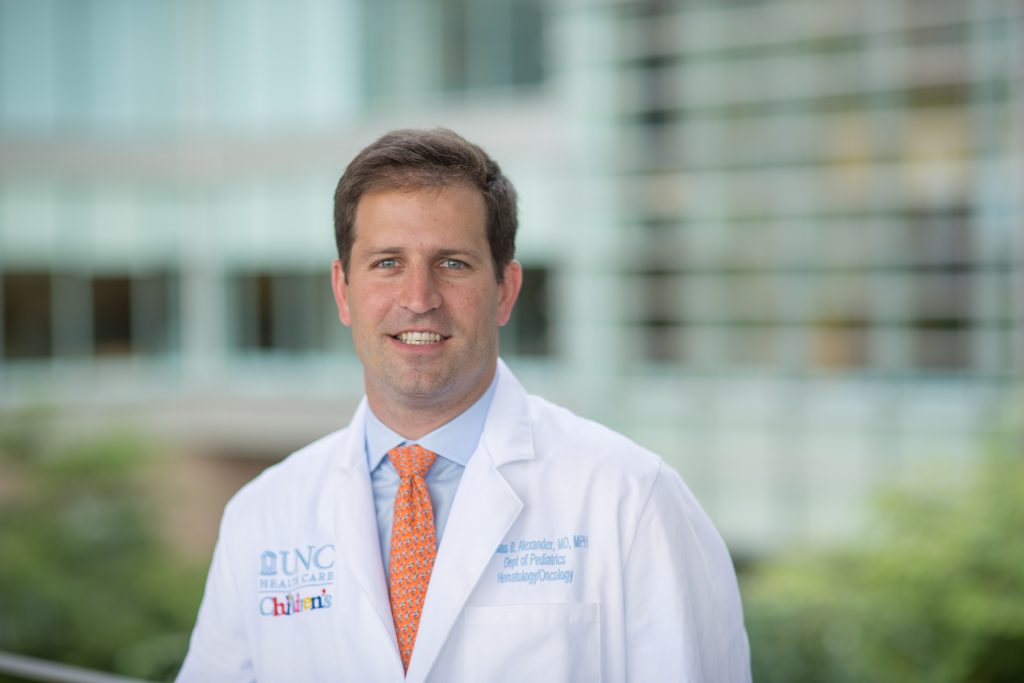A newer, less expensive RNA-based nanotechnology may make it possible to more accurately diagnose children with acute leukemia in lower income and low resource countries, according to a finding by UNC Lineberger Comprehensive Cancer Center researchers and colleagues. More accurate diagnoses can help clinicians choose the best treatment choices as some types of leukemia respond better when targeted with drugs that are specific to certain genetic mutations or other unique disease features.
Their findings were published April 20, 2022, in JCO Precision Oncology.
The researchers used a type of nanotechnology called nanopore detection to look for changes in messenger RNA (mRNA) in 134 tissue samples from children with four different types of leukemia: acute myeloid leukemia (AML), B-lineage acute lymphoblastic leukemia, T-lineage acute lymphoblastic leukemia and acute undifferentiated leukemia. The researchers were able to diagnose what type of leukemia a child had with more than 90% accuracy. Current techniques used in many low resource countries can include looking at a slice of a tumor under a microscope to see what types of cancer cells are present, which usually does not provide sufficient information to make an accurate diagnosis to inform the most appropriate treatment.

“It’s of great importance that the World Health Organization launched a Global Initiative for Childhood Cancer in 2018 to support pediatric cancer efforts that are focused in low resource countries. WHO is working with multiple partners to pursue supportive care and treatments across the cancer care continuum,” said UNC Lineberger’s Thomas Alexander, MD, MPH, an assistant professor in the Department of Pediatrics at UNC School of Medicine and corresponding author of the article. “The WHO effort is really just taking off, but some of their key early programs have focused on program organization, supportive care, and treatment, which can go only so far if a diagnosis is unclear, so that’s where we come in with our study of nanopore technology.”
Jeremy Wang, PhD, assistant professor in the Department of Genetics at UNC School of Medicine, is the paper’s first author.
Alexander noted that his team’s effort is a feasibility study so, while this approach looks promising, additional research is needed to determine if the nanopore technique can be successfully deployed and reproducible in low-resource settings where other, more expensive diagnostic techniques are unavailable.
The current cost for many advanced diagnostic genetic tests in the United States is under $1,000 per specimen. Nanopore technology enables cancer specimens to be genetically analyzed for between $100 to $300 each. Upfront capital costs are also a major factor as purchasing advanced genetic testing devices can often run close to $500,000 in the U.S. The nanopore device the UNC investigators used costs just under $1,000.
“Geographically, we have ongoing collaborations with teams in Malawi and Pakistan to validate this test. For the next phase of our work, we’ll partner with others and expand to two countries in Central America, one in South America, and additional collaborations in Asia and Africa, which will provide a much better idea of the technical validity and scalability of our work,” Alexander said. “In a number of respects, starting our study with leukemia made our investigation easier but happily, it turns out that the nanopore capabilities look more promising in solid tumors than we initially thought. We’re now actively exploring the technology across all pediatric solid tumors and starting to look at adult lymphomas as well.”
Authors and disclosures
In addition to Alexander and Wang, the paper’s other authors are Vanessa Ayer Miller, PhD, Mahler Revsine, Yuri Fedoriw, MD, and Corbin D. Jones, PhD, UNC at Chapel Hill; Nickhill Bhakta, MD, MPH, Kathryn G. Roberts, PhD, and Charles G. Mullighan, PhD, MBBS, St Jude Children’s Research Hospital, Memphis, TN; Mark R. Litzow, MD, Mayo Clinic, Rochester, MN; and Elisabeth Paietta, PhD, Montefiore Medical Center, Bronx, NY.
The research was supported in part by a Kid’s Research Grant, a University of North Carolina Oncology K12 grant (K12CA120780) and the University Cancer Research Fund. Alexander did not have any conflicts to disclosure.
A comprehensive listing of funding and disclosures are listed online.
